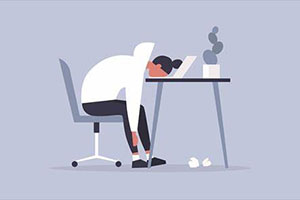 “Well this must be your ideal scenario as an introvert. You must love working from home without any superficial conversations draining your energy. I bet it will be hard for introverts to go back in the office after being able to control social interactions for so many months.”
“Well this must be your ideal scenario as an introvert. You must love working from home without any superficial conversations draining your energy. I bet it will be hard for introverts to go back in the office after being able to control social interactions for so many months.”
This simple observation from a colleague stuck with me for a week. If introverts are drained by things like superficial conversations, spontaneous questions, and long days of social interactions, then working remotely should be the ultimate energy preservation work scenario. In a remote office, we have more control over who we engage with (and when) than if someone physically walks into our office for a quick chat. Even when we lack the social energy for a conversation, we typically respond politely rather than awkwardly explain that we just need some time alone.
But if it’s true that remote work should protect an introvert’s energy more than in an office, then why do we feel more drained than ever?
While we’re likely more in control of spontaneous conversations while working remotely, the nature of meetings has changed drastically since March. With the sudden shift to fully remote teams due to the pandemic, we’ve overcompensated for the lack of face-to-face conversations by turning every meeting into a video call. Rapidly shifting priorities, a stronger need for frequent check-ins, and the rising popularity of virtual happy hours means we’re spending a large percentage of our time on Zoom, Teams, and WebEx video conferences.
Even if we’re experiencing the same number of minutes interacting socially, there’s something about a video call that uniquely affects introverts.
To understand why the video call operates as an energy vampire for introverts, we must think through the way they process a typical social interaction. In addition to being more reserved and calm, they are excellent listeners. They “listen” not only to what people say, but how they say it and that includes nonverbal behaviors. They also process that information internally and incorporate the assumptions they’ve made about those behaviors when they respond.
Depending on the seating arrangement in a typical conference room, each person likely only focuses on the behaviors of the individuals speaking or seated directly across from them. However on a video call, each person’s facial expressions are equally on display. There’s a degree of sensory overload as an introvert tries to quickly scan the faces across the screen to observe their nonverbals.
And in a virtual meeting, there is always one extra attendee to observe….one’s self. This can be a particular challenge for someone who feels insecure on camera. Suddenly, the individual is acutely aware of every single person in the “room’s” expressions including their own.
It’s exhausting!
Now that the novelty of marathon video calls has worn off, it’s time to examine the value (or drain) the experience is creating for each individual.
- Check in with your team to see how much they appreciate or loathe the video call experience.
- Consider incorporating a meeting-free day into the team schedule so you can preserve everyone’s energy from internal video conferences.
- At a minimum, openly state that everyone is free to choose whether they prefer to be camera-on or camera-off with no explanation necessary.
If we’ve learned anything during this pandemic, it’s that we should be ready and willing to adapt to rapidly changing needs. We’re in a constant state of course-correction these days. Now is a good time to evaluate if your video call culture needs to be reined in.
